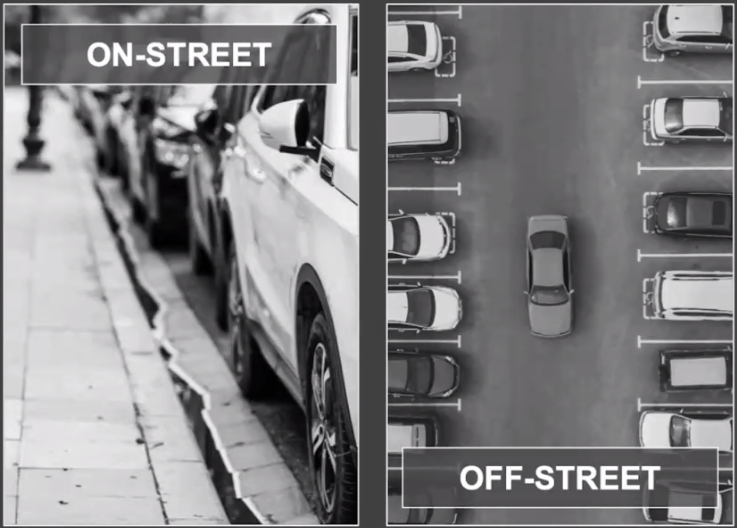Note: GJEL Accident Attorneys regularly sponsors coverage on Streetsblog San Francisco and Streetsblog California. Unless noted in the story, GJEL Accident Attorneys is not consulted for the content or editorial direction of the sponsored content.
There are 15 million parking spaces in the Bay Area--enough that if they were put end to end, they would stretch around the world 2.3 times.
That was the takeaway of a new joint study by SPUR and the Mineta Transportation Institute. "If we converted just 5 percent of off-street parking into housing, we could add 70,000 housing units," explained SPUR's Laura Tolkoff during a panel discussion Monday about the new Bay Area Parking Census. She added that the housing wouldn't even be terribly dense--just fourplexes, not big high-rise apartments. "And I think a lot of people would rather have more affordable housing than a parking spot."
The study authors stressed that prior to this work there wasn't really an overall look at exactly how much land in the Bay Area is dedicated to parking. "Per capita spaces is around two per person," explained Mikhail Chester of Arizona State University, who also worked on the study. That means even people who never drive are paying huge premiums for parking.
It also means dedicating land to something that nobody should want, even drivers themselves. "Like wider roads, so much parking induces people to drive. Guaranteed off-street parking, even in places with abundant transit, encourages driving, creates more pollution and greenhouse gases," and makes traffic worse, explained Tolkoff.
Tolkoff, Chester and Transform's Hayley Currier, who was also part of the discussion, said this new census data was needed. Otherwise, policymakers are always pushing against demands for parking from local residents without any way to quantify things and push back. "Our goal was both to create this publicly accessible data set," said Tolkoff, "and to build a case for parking reform."

The study seeks to quantify off-street and on-street parking, and then explore how each might be used more efficiently. Because, obviously, with such a high ratio of parking spots to people and cars, most of these spots sit empty most of the time (despite the perception that there's "no place to park"). The presenters gave several examples, but the most egregious was the Oakland Coliseum, where 81 percent of the land is dedicated to parking, which sits unused the vast majority of the time. "What can we do with this land that’s more functional?" asked Chester.
Some people must drive, even when taking transit to their final destination, either because they live up in the hills, or too far from a BART station or a connecting bus. But if parking is looked at holistically, instead of just site by site, the picture changes of how much parking is needed. For example, Currier brings up the North Berkeley BART station, which is getting a housing development on its vast parking lot. "Zoom out and look at parking at the district level and look at transportation as a system, so we avoid building excess parking," she said.
She pointed out how there's a basically unused parking garage in downtown Berkeley, a six-minute drive away from the North Berkeley stop. "That parking garage is right next to the Berkeley downtown BART station," she said, adding that the garage wasn't even fully used in pre-COVID times. Keep in mind that some people may have been driving further to access the North Berkeley parking lot. "We have to look at parking management at the city level so we can utilize our very valuable land for its best use."
Tolkoff added that the study leads to some obvious policy recommendations, such as eliminating minimum parking requirements anywhere that is accessible to transit. "Let’s stop having the zoning predict how much parking, and focus parking supply by the demand. Let’s use it as a tool for supporting transit use and other modes."
"Our unpaid parking is not free. We pay in higher costs for goods and services. We pay in negative impacts, such as respiratory impacts from pollution and injuries from collisions," said Tolkoff.
The cost of parking has to be unbundled from housing and commerce, added the panelists, so it can be used efficiently. What profits are derived from charging for it, should go towards transit and bike lane improvements, so people have viable alternatives.
And in cases where people really will be unfairly burdened, the Bay Area needs to develop targeted parking subsidies, perhaps, but also discounts on alternatives, such as scooter share, bikes, and transit passes. This would follow the example of the "Golden Transportation Wallet" from Portland, seen below:
Either way, "the status quo is not equitable," said Tolkoff. "Almost all of our funding goes to roads and driving, and the transportation system doesn’t work for everyone. Unpaid parking is not free. And that disproportionately impacts people of color and low-income communities."
"Housing advocates should care about parking policy," said Currier. "28 percent of parking lots are unused, which is less space for homes. Climate advocates should care about parking. People who hate traffic should care about parking. And bicycle advocates should care about parking."
For more events like these, visit SPUR’s events page.






